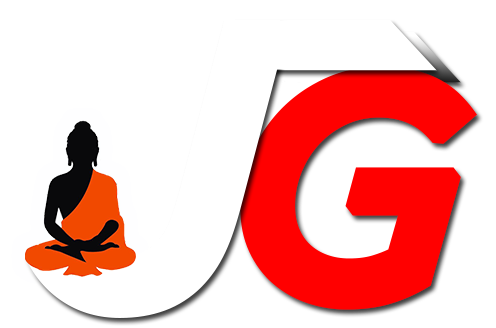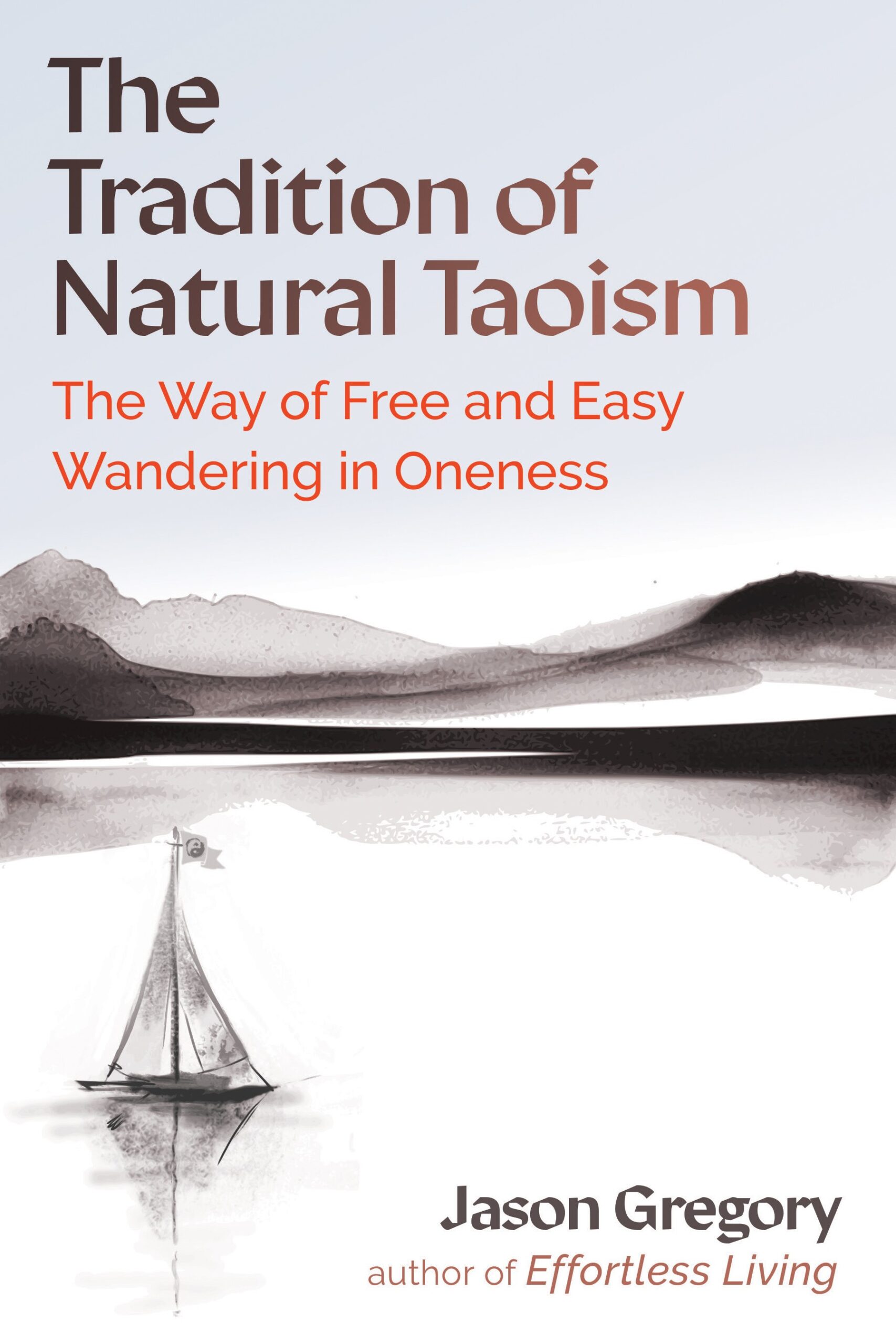Fasting the Mind 44% Off Pre-order Special & Free Gift Giveaway
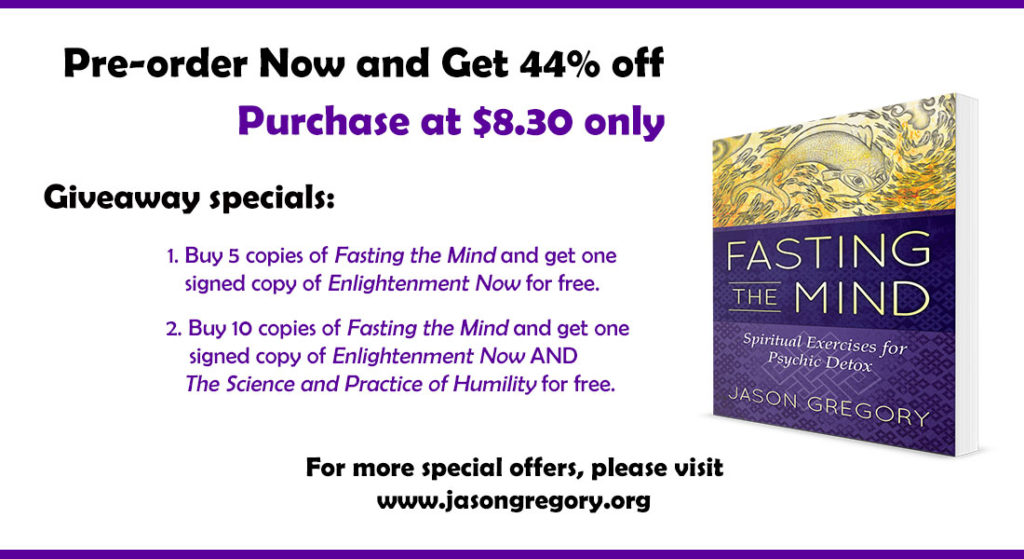
To celebrate the publication of my new book Fasting the Mind this year Amazon and I will be holding outrageous deals on pre-ordering which will expire on the publication date of May 26. Amazon’s pre-order price guarantee is set at an amazing 44% off retail price, putting the book at only $8.30 if you pre-order now. That’s right, you will save $6.65 if you pre-order now. Also I will have four pre-order offers for you to choose from which all include a bunch of awesome stuff that you can share with others. These packages might be the perfect solution to a lot of headaches people have when trying to decide on gifts for others. Below you’ll see these four offers and bonuses for anyone who pre-orders the book now. If you believe there are people in your life that might benefit from or enjoy my new book then take advantage of this once off offer. The Revolution of Mind is here, but you need the book to know that first. MY OFFER TO YOU #1 – If you pre-order 5 copies of Fasting the Mind before May 26, you’ll receive: *A personally signed copy of my most recent book Enlightenment Now delivered to your door. Click here to pre-order 5 copies, then email your receipt to jasongregory@hotmail.com.au with “Pre-order #1” in the subject. When you receive the books send a photo of you with the books to the above email or post it on my Facebook or Twitter and I will send your gift straight away (The photo is done just to make sure people actually receive the pre-orders and do not cancel their pre-order and receive my gift under false pretences). #2 – If you pre-order 10 copies of Fasting the Mind before May 26, you’ll receive: * A personally signed copy of my book The Science and Practice of Humility delivered to your door. * A personally signed copy of my most recent book Enlightenment Now delivered to your door. Click here to pre-order 10 copies, then email your receipt to jasongregory@hotmail.com.au with “Pre-order #2” in the subject. When you receive the books send a photo of you with the books to the above email or post it on my Facebook or Twitter and I will send your gift straight away (The photo is done just to make sure people actually receive the pre-orders and do not cancel their pre-order and receive my gift under false pretences). #3 – If you pre-order 20 copies of Fasting the Mind before May 26, you’ll receive: * A personally signed copy of my book The Science and Practice of Humility delivered to your door. * A personally signed copy of my most recent book Enlightenment Now delivered to your door. * A personally signed copies of my new book Fasting the Mind delivered to your door. *A 30 minute skype call with me to discuss my work and strategies that will help design a healthy lifestyle for you which will promote well-being, focus, mindfulness, and creativity that all contribute to authentic independency. This conversation is not set in stone and can be flexible based on your needs. Click here to pre-order 20 copies, then email your receipt to jasongregory@hotmail.com.au with “Pre-order #3” in the subject. When you receive the books send a photo of you with the books to the above email or post it on my Facebook or Twitter and I will send your gift straight away (The photo is done just to make sure people actually receive the pre-orders and do not cancel their pre-order and receive my gift under false pretences). #4- If you pre-order 50 copies of Fasting the Mind before May 26, you’ll receive: * 2 personally signed copies of my last book The Science and Practice of Humility delivered to your door. * 2 personally signed copies of my most recent book Enlightenment Now delivered to your door. * 2 personally signed copies of my new book Fasting the Mind delivered to your door. *A 1 hour skype call with me to discuss my work and strategies that will help design a healthy lifestyle for you which will promote well-being, focus, mindfulness, and creativity that all contribute to authentic independency. This conversation is not set in stone and can be flexible based on your needs. Click here to pre-order 50 copies, then email your receipt to jasongregory@hotmail.com.au with “Pre-order #4” in the subject. When you receive the books send a photo of you with the books to the above email or post it on my Facebook or Twitter and I will send your gift straight away (The photo is done just to make sure people actually receive the pre-orders and do not cancel their pre-order and receive my gift under false pretences). *This offer applies to digital or physical pre-orders. Thank you all for the support.
The Mysterious Mind of the East
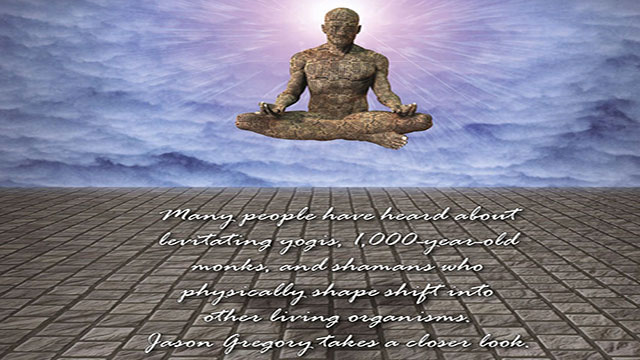
From a Western perspective the mind of the East has always appeared peculiar. The Eastern way of thinking, their philosophy and spiritual beliefs, run counter to Western thought. Today, in the modern world, the Western view of life has become the norm, even in the East. The Western approach of radical individualism has spread all around the world, while the Eastern view of holism and collectivism is taking a backseat while each and every individual tries to reach the top of the social heap by tramping over others. A result of this striving for ‘success’ is that we have become excessively busy, and …
Enlightenment Now Christmas Gift Giveaway

Take care of all your family and friends this holiday season with my Enlightenment Now Christmas Gift Giveaway. To celebrate the holiday season I will be holding a order giveaway with many free gifts expiring on the date of December 31. There are four order offers to choose from which all include a bunch of awesome gifts that you can share with others. With Christmas so close one of these packages might be the perfect solution to a lot of headaches people have when trying to decide on gifts for others, especially meaningful gifts. Below you’ll see these four offers and bonuses for anyone who orders the book. If you believe there are people in your life that might benefit or enjoy my new book then take advantage of this once off offer. MY OFFER TO YOU #1 – If you purchase 5 copies of Enlightenment Now before December 31, you’ll receive: *A personally signed copy of Enlightenment Now or The Science and Practice of Humility delivered to your door. Click here to purchase 5 copies, then email your receipt to jasongregory@hotmail.com.au with “Order #1” in the subject. When you receive the books send a photo of you with the books to the above email or post it on my Facebook or Twitter and I will send your gift straight away (The photo is done just to make sure people actually receive the orders and do not cancel their order and receive my gift under false pretences). #2 – If you purchase 10 copies of Enlightenment Now before December 31, you’ll receive: * A personally signed copy of my last book The Science and Practice of Humility delivered to your door. * A personally signed copy of my new book Enlightenment Now delivered to your door. Click here to purchase 10 copies, then email your receipt to jasongregory@hotmail.com.au with “Order #2” in the subject. When you receive the books send a photo of you with the books to the above email or post it on my Facebook or Twitter and I will send your gift straight away (The photo is done just to make sure people actually receive the orders and do not cancel their order and receive my gift under false pretences). #3 – If you purchase 20 copies of Enlightenment Now before December 31, you’ll receive: * A personally signed copy of my last book The Science and Practice of Humility delivered to your door. * A personally signed copy of my new book Enlightenment Now delivered to your door. *A 30 minute skype call with me to discuss my work and strategies that will help design a healthy lifestyle for you which will promote well-being, focus, mindfulness, and creativity that all contribute to authentic independency. This conversation is not set in stone and can be flexible based on your needs. Click here to purchase 20 copies, then email your receipt to jasongregory@hotmail.com.au with “Order #3” in the subject. When you receive the books send a photo of you with the books to the above email or post it on my Facebook or Twitter and I will send your gift straight away (The photo is done just to make sure people actually receive the orders and do not cancel their order and receive my gift under false pretences). #4- If you purchase 50 copies of Enlightenment Now before December 31, you’ll receive: * 3 personally signed copies of my last book The Science and Practice of Humility delivered to your door. * 3 personally signed copies of my new book Enlightenment Now delivered to your door. *A 1 hour skype call with me to discuss my work and strategies that will help design a healthy lifestyle for you which will promote well-being, focus, mindfulness, and creativity that all contribute to authentic independency. This conversation is not set in stone and can be flexible based on your needs. Click here to purchase 50 copies, then email your receipt to jasongregory@hotmail.com.au with “Order #4” in the subject. When you receive the books send a photo of you with the books to the above email or post it on my Facebook or Twitter and I will send your gift straight away (The photo is done just to make sure people actually receive the orders and do not cancel their order and receive my gift under false pretences). *This offer applies to digital or physical pre-orders. Thank you all for the support.
Enlightenment in the East: Misunderstood & Misinterpreted

Enlightenment in the East: Misunderstood & Misinterpreted Enlightenment in the East is often misunderstood and misinterpreted. It is completely different from the philosophical movement known as “the Enlightenment” in Europe during the 18th century. Eastern enlightenment is often studied but never experienced. It is usually viewed through our Western and modern linear view of life. Yet the Eastern view of life is built on the natural world’s foundation of a nonlinear view, inclusivity rather than exclusivity, collectivism over individualism, which all contribute to a perception of reality attuned to holism rather than an analytical perspective. Instead of analytically dissecting reality into separate parts to try and understand the whole, the East focused on how the apparent separateness of life is integral and essentially one. Both the holistic and analytical mind were environmentally determined by life’s circumstances thousands of years ago which influenced the way an Easterner and Westerner perceive the world until present day. The analytical mind is attributed to the West. It results from smaller communities during the first two millennia BCE in Greece which were naturally more individualistic because they had to fend for themselves and live off the individual labor of hunting, herding, and fishing for obtaining food. During the same period in the East the environment determined that it was best to live in large communities due to the arduous labor required for rice cultivation. This was especially the case in China and India. For example, the birth of Chinese civilization evolved from the Yellow River Valley area of northern China where rice was the essential food source. Living in large communities in the East people were dependent on each other and the health and well-being of every person. Your own individual self-interest and self-importance was surrendered to what was important for the collective good. This attitude geared people’s mind towards being holistic. As a result they attained a natural nonlinear view of reality. The analytical mind and linear view is the result of individualism, while the holistic mind and nonlinear view is the result of the collective perspective. This doesn’t mean one view is better or more real than the other. But the problem we encounter today is the holistic mind and nonlinear view of reality is disappearing in favor of a world driven by individual pursuits at the expense of our collective well-being, even in the modern East. The holistic mind and nonlinear view is the way of nature and is expressed through our intuition. The analytical mind and linear view is expressed through our intellect. Both are somewhat necessary but we overcompensate for the latter, which ultimately leads to the decline of nature and our own enlightenment as an individual. A mind primarily driven by the linear analytical view of reality contributes to the slow destruction of nature and also the mind itself. We see this with the alarming abundance of mental health issues and ecological problems today. The natural mind is rooted in the holistic nonlinear view which is the fundamental framework of nature, and human beings are an aspect of nature. This doesn’t mean the analytical mind and linear view cease to exist. But instead they should only be employed in those brief moments that require our attention to detail. Yet if your mind is rooted in its holistic nature then any attention to detail will be done without the sense of a separate person doing it, in the same fashion as Krishna was imploring Arjuna to do in battle against his family and friends within the Hindu epic Bhagavad Gita. The nonlinear world of nature and individual enlightenment are intimately related. But our sense of an identity separate from everything else has to disappear before we can realize enlightenment. Patanjali, the founder of yoga, explains this using the Sanskrit purusha (absolute pure awareness and the identical source of the universe within each of us, similar to the concept of Atman in Vedic scripture) and prakrti (all the form and energy of the manifest universe, including thoughts). He explains that the fundamental purpose of nature (prakrti) is for the human being to bring purusha forth into the world. Purusha, then, according to Patanjali, is the ultimate fulfilment of nature and why we essentially exist. Yet this could only happen if the idea of an isolated separate personality has disappeared because when our mind is pulled here and there by the movement of mental activity and life we lose our sense of purusha within. It is eclipsed by a haze of overstimulated mental activity. As a result we begin to firmly believe in the notion of past and future without an appreciation or recognition of the present moment. This is a disaster according to the Eastern wisdom traditions. In the East eternity and our connection to it is not some far off destination or someplace we go after death. It is right now where time and thinking are completely cut off. The eternal now aspect within our mind is experienced when we constantly ground ourselves in pure awareness (purusha). The more we bring our mind back to pure awareness the more we will experience the eternal aspect of the universe because pure awareness is beyond time, form, and mental activity. Our personality, on the other hand, is built and sustained by the linear view of the world. It is an accumulation of experiences from the past that we believe determines our future. Actually we tend to project our desires into the future based on our past. As a result our personality becomes entangled with suffering which is the result of linear time. When we realize we are the charioteer and begin to reign in the wild horses, to use Plato’s analogy of the mind, we become free from the entanglement of a time-bound personality that is causing all the trouble in the world. The real you, the true Self/Atman (Atman is a
Enlightenment Now: My New Book and a Bunch of Pre-order Gifts
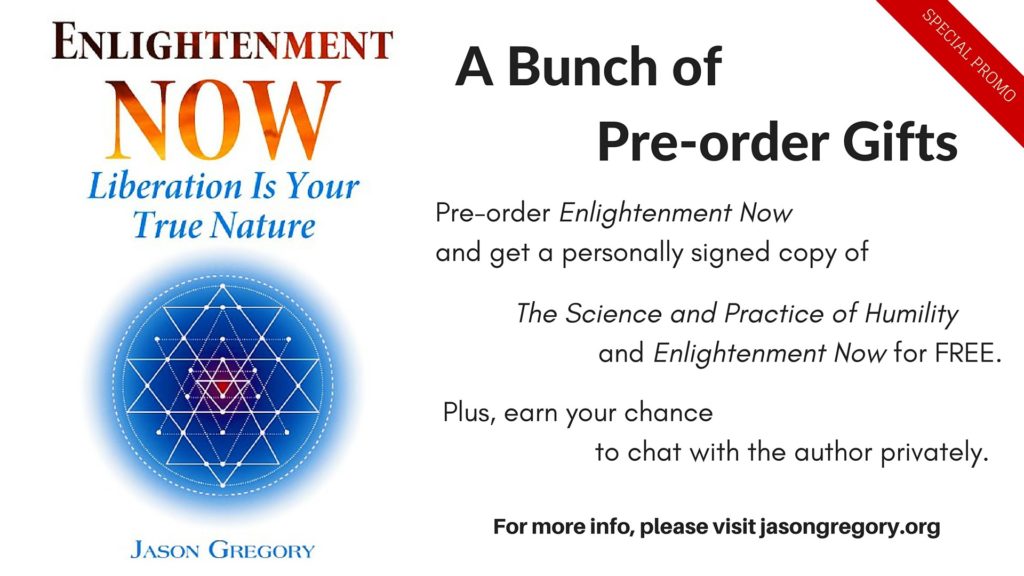
To celebrate the publication of my new book Enlightenment Now this year I will be holding a pre-order giveaway with many free gifts expiring on the publication date of October 13. There are four pre-order offers to choose from which all include a bunch of awesome stuff that you can share with others. With October being so close to Christmas one of these packages might be the perfect solution to a lot of headaches people have when trying to decide on gifts for others. Below you’ll see these four offers and bonuses for anyone who pre-orders the book. If you believe there are people in your life that might benefit or enjoy my new book then take advantage of this once off offer. MY OFFER TO YOU #1 – If you pre-order 5 copies of Enlightenment Now before October 13, you’ll receive: *A personally signed copy of my last book The Science and Practice of Humility delivered to your door. Click here to pre-order 5 copies, then email your receipt to jasongregory@hotmail.com.au with “Pre-order #1” in the subject. When you receive the books send a photo of you with the books to the above email or post it on my Facebook or Twitter and I will send your gift straight away (The photo is done just to make sure people actually receive the pre-orders and do not cancel their pre-order and receive my gift under false pretences). #2 – If you pre-order 10 copies of Enlightenment Now before October 13, you’ll receive: * A personally signed copy of my last book The Science and Practice of Humility delivered to your door. * A personally signed copy of my new book Enlightenment Now delivered to your door. Click here to pre-order 10 copies, then email your receipt to jasongregory@hotmail.com.au with “Pre-order #2” in the subject. When you receive the books send a photo of you with the books to the above email or post it on my Facebook or Twitter and I will send your gift straight away (The photo is done just to make sure people actually receive the pre-orders and do not cancel their pre-order and receive my gift under false pretences). #3 – If you pre-order 20 copies of Enlightenment Now before October 13, you’ll receive: * A personally signed copy of my last book The Science and Practice of Humility delivered to your door. * A personally signed copy of my new book Enlightenment Now delivered to your door. *A 30 minute skype call with me to discuss my work and strategies that will help design a healthy lifestyle for you which will promote well-being, focus, mindfulness, and creativity that all contribute to authentic independency. This conversation is not set in stone and can be flexible based on your needs. Click here to pre-order 20 copies, then email your receipt to jasongregory@hotmail.com.au with “Pre-order #3” in the subject. When you receive the books send a photo of you with the books to the above email or post it on my Facebook or Twitter and I will send your gift straight away (The photo is done just to make sure people actually receive the pre-orders and do not cancel their pre-order and receive my gift under false pretences). #4- If you pre-order 50 copies of Enlightenment Now before October 13, you’ll receive: * 3 personally signed copies of my last book The Science and Practice of Humility delivered to your door. * 3 personally signed copies of my new book Enlightenment Now delivered to your door. *A 1 hour skype call with me to discuss my work and strategies that will help design a healthy lifestyle for you which will promote well-being, focus, mindfulness, and creativity that all contribute to authentic independency. This conversation is not set in stone and can be flexible based on your needs. Click here to pre-order 50 copies, then email your receipt to jasongregory@hotmail.com.au with “Pre-order #4” in the subject. When you receive the books send a photo of you with the books to the above email or post it on my Facebook or Twitter and I will send your gift straight away (The photo is done just to make sure people actually receive the pre-orders and do not cancel their pre-order and receive my gift under false pretences). *This offer applies to digital or physical pre-orders. Thank you all for the support.
Humility: A Sage’s Ultimate Reality
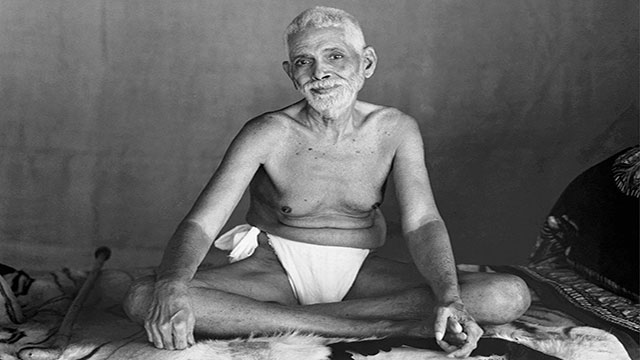
Humility: A Sage’s Ultimate Reality The effortless universal virtue of humility is what evokes enlightenment in life. The big problem with this mystical virtue is generally we only have fleeting moments of its power, as we constantly get sucked back into the subjective dramas of the world in our mind. As a result, we revere the sage for their sustained absorption in the lowest and paradoxically most powerful state of humility. A master absorbed in the humble and most refined state of consciousness has truly accepted life as it is. They have no desire to promote their own agenda, as from this state all agendas have evaporated like dewdrops on a hot sunny day. We seek to attain this level of perception through our spiritual practice but we get lost in social and cultural habits of thinking linearly, as we strive to succeed by gaining “spiritual powers.” This has more to do with showmanship than mysticism. We shed our old persona for a new and improved “spiritual persona.” Still driven by the ego we are attempting to define ourselves as someone “special” in relation to the world. Our spiritual practice becomes more about how to stick our head above the rest of the crowd. But enlightenment has no relationship to such an approach. Enlightenment is evoked by resting in the lowest place of humility. Water corresponds to this low place of humility. Water is the lowest force of nature, yet paradoxically it is the most powerful. Humility, like water, is the low and receptive virtue of nature within our psychology and linked to the unconscious, which paradoxically is the most powerful state of being that transforms the world without any intention to do so. Enlightenment is not something we can strive to attain. It is as natural as water moving down a mountain stream undisturbed, where the destination and journey are one. Humility is the state of consciousness when destination and journey, self and other, individual and universe, samsara and nirvana, reveal their intrinsic unity disguised as mutual opposites. Humility evokes this perception of enlightenment, which is actually the fruit of all spiritual practice and also life. We don’t perceive this in our life or practice because we are indoctrinated by culture to focus on the foreground of life instead of the background. We only perceive and are attracted to chaos in the world which is a reflection of the attraction to chaos within our mind. This eventuates because we have not refined our consciousness into the pure jewel of transparent and reflective awareness. When we are caught in the detail/drama of life we are trying to control the universe to suit our egotistical desires and cravings. We are still playing a game of one-upmanship with the world because we appall the low road of humility that unites us with the source of the universe. Humility evokes enlightenment when we give up trying to control life and instead trust the universal flow in the same way that water trusts the contours of a river without resisting its own clear nature of transparency and reflectivity. We are out of sync with the universe because we have lost this innate trust. Our trust continues to sleep dormant because we are trying to change the world to suit our conditioning according to sensory pleasures with the absurd exclusion of pain. Changing the world is the primary focus of most people. We feel as though we are saving the world but we don’t know who or what from. We believe we are a prisoner in this beautiful garden. We seek to save ourselves from its claustrophobic steel bars that develop in our mind so we can someday enjoy the aroma of the flowers. But we were never enslaved, nor is there anything to free ourselves from. We have invested too much time and energy on the chaos of the world within our mind without realizing it is only the detailed foreground of an orderly background. Intrinsic to chaos is order. This is the evolved perception of a sage. If our perception is too contracted we lose sight of reality as it is. We perceive chaos within and without, and believe it is stagnant and not undergoing any fundamental change. We become frustrated as a result and seek to force change with an intention that is solely our own. Trying to change or save the world implies that reality is not already perfect and that somehow we are isolated from it as a stranger in this cosmos. Contrary to this common feeling, when we let go and trust the universe, as a sage does, we realize deep within a “sense of unity” that is the goal of all spiritual practice and life. The fundamental paradox of life is we can never know true and authentic unity if we do not trust the universe. You cannot strive for unity because unity is evoked by the trust you live. Though, this unity is not the same unity that we dream about in images of world peace. It is the unity which dawns on an individual consciousness when opposites merge and chaos becomes perfect order from a state of perception so pure that the nature of the universe is finally seen as it truly is. Only then is world peace possible because our perception of order instead of chaos has given us the humility to receive the world with open arms and an agenda-less mind. Our struggles in life are born from not perceiving perfection in what others erroneously believe is imperfect. Our fundamental notion of duality between self and the universe continues to eclipse this beautiful perfection from our eyes. Living the science of humility is the sage’s medicine for our blindness. Published by Watkins Magazine http://www.watkinsmagazine.com/ Common Ground Magazine http://onlinedigitaleditions.com/commonground/archive/web-09-2015/ SHARE
Jason Gregory’s Foreword for Damo Mitchell’s New Book White Moon on the Mountain Peak
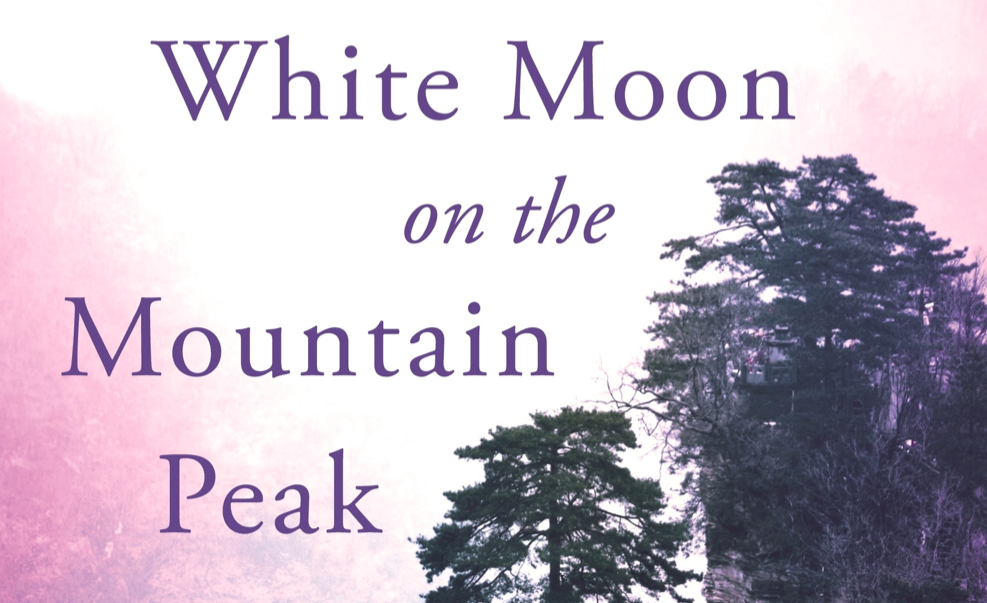
Foreword The Daoist Key to Naturalness Nothing frustrates the mind more than its attempts to be spontaneously natural without any intention to do so. We encounter this frustration within most spiritual traditions around the world. This becomes a battle between our conscious self (ego) and the adaptive mystical unconscious. This dilemma is explored and brought face to face with our awareness to the core of the problem most categorically in the mystical traditions of the East and the philosophy and methods of practice that have evolved from these Asian cultures as a result. Both the philosophy and methods of practice have tried to deal with this paradoxical obstacle of trying to be natural without “trying” to be natural. We have had philosophers and practitioners debating for millennia over this universal conundrum. As far as our historical records suggest this problem originated in the classical period of Chinese philosophy known as the ‘Hundred Schools of Thought’ (諸子百家) which flourished from the 6th century to 221BC, during the Spring and Autumn period and the Warring States period of ancient China. In this period we saw the rise of the four great philosophers of ancient China who all in some way contributed to a deep understanding of our attempts to be natural. They were Laozi, Confucius, Mencius, and Zhuangzi. We could debate all day long who we think has the superior philosophy or if they all somehow contribute to further our knowledge of the matter, but that is not the point. The key argument that gets to the point is whether we can induce naturalness (ziran in Chinese 自然), or whether it comes from a state of non-doing. This is best symbolized between the different perspectives of Laozi and Confucius. Both were concerned with how a human being accords to the Way (Dao in Chinese道) and lives its virtue (de in Chinese 德) as a result. One of the only things they would agree upon was that we need to return to our nature to be in the cosmic river of Dao. Yet both of their philosophies to live our nature were diametrically opposed. Confucius believed in the “carving and polishing” of the block of wood perspective. His belief is that we should chisel away at our beastly character to cultivate the Confucian virtues that are supposed to turn us into a Superior Man (Junzi in Chinese君子) who is in the end only functioning as an empty vessel for the forces of Dao to work through. The Confucian approach to naturalness, as a result of carving and polishing, is the method of wei-wu-wei (為無為), meaning doing non-doing. Naturally in the flow of the Way was to be obtained through following the ethics, odes, rituals, and sacrifices of Confucian philosophy (Ru in Chinese儒), which is supposed to shape our psychology to sense intuitively the metaphysical Way of the Dao in our ordinary life. But a big problem with this approach is it assumes that the Dao adheres to the philosophy of Ru and not the other way around. We lose sight of the meaning of ritual, as the Vedic civilization of the Indus Valley in India and Pakistan did as well, and we believe that the virtue of spontaneity is only confined within ritual and those who practice it. Laozi, on the other hand, believes this approach is a disaster and in a way go on to explain that the Confucians are still interpreting the spontaneous nature of Dao with the conscious mind which indicates that even the Junzi is not really an empty vessel. Instead of carving and polishing the block of wood, Laozi would suggest we stick to the “uncarved block” or unhewn wood in other words. Holding onto the uncarved block we quell all our attempts to be natural and just allow spontaneity to be as it will in our life with no premeditated control of it. This leads to the essential Daoist art of living known in Chinese as wu-wei (無為), meaning non-doing. According to Laozi wu-wei is the way to align our mind to the Dao because we have stopped trying to control our experience. He believed that if we embraced non-doing in our life the conscious self (ego) would loosen its grip of tyranny within our mind so the mystical unconscious can allow our experience to be as it will without our personal agenda and desires of life projected upon it. But we should keep in mind that Laozi is not saying literally that we should do nothing and become a stone Buddha. What he is saying is that when we don’t force life to be a certain way and instead allow life to happen, wu-wei, we accord to the Dao because the sense of “I” has become subservient to the Way of nature, which is spontaneous. This means that outwardly we could be actively doing things but within we are effortless because the sense of personality has marinated and become absorbed in the Dao. We discover this Laozian understanding of wu-wei also in the Indian epic Bhagavad Gita with the Sanskrit nishkam karma where Krishna advocates to Arjuna to remain active but be inwardly effortless without the need of being rewarded for the fruits his labor. Essentially Krishna wants Arjuna to be so effortless that his actions are completely selfless because the “I” has dissolved. The Bhagavad Gita states this in two key verses: To action alone hast thou a right and never at all to its fruits; let not the fruits of action be thy motive; neither let there be in thee any attachment to inaction. Fixed in yoga, do thy work, O Winner of wealth (Arjuna), abandoning attachment, with an even mind in success and failure, for evenness of mind is called yoga. When we attempt to act with the sense of being the doer we resist the Dao and suffer as a result. To use an example, when we try to open a door with a key if we force the key when
Footsteps of the Masters India Tour with Jason Gregory 2016
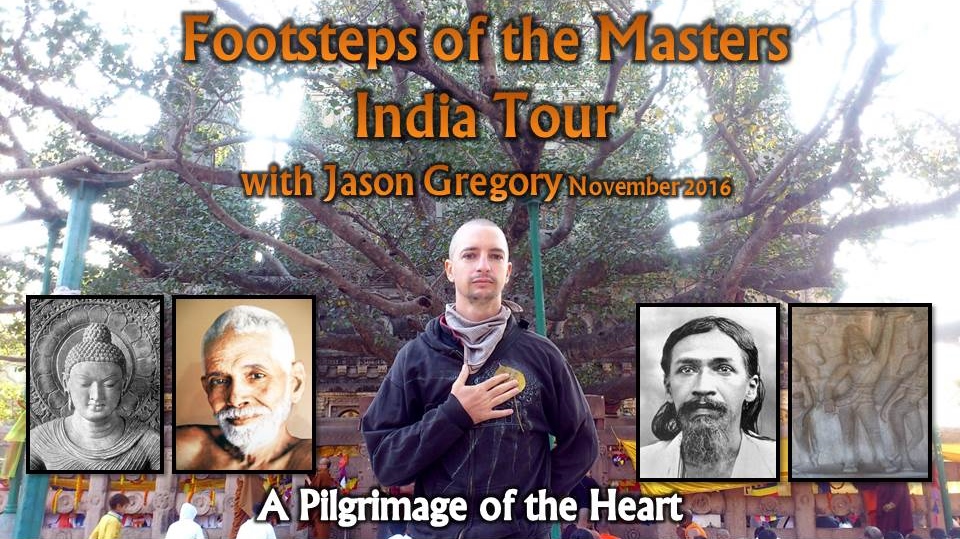
FOOTSTEPS OF THE MASTERS INDIA TOUR with Jason Gregory 7-18 NOVEMBER 2016 For the first time you can travel with author and teacher of Eastern philosophy Jason Gregory on a mystical tour of India to explore and trace the Footsteps of the Masters. Get unique insights into Jason’s knowledge of the East and the memory of the masters and scared places we will visit. Jason wishes to take people to the most sacred places of India to show that the ancient Hindu and Buddhist cultures are thriving but can only be experienced by those willing to join him on this pilgrimage of the heart. 1. About our tour to India: Our 12-day itinerary includes visits to the most beautiful and mystical places in India. We will travel through India to visit the most important sacred places of Indian history. Most people never get the chance to experience face to face the archaic origins and sites of Hindu and Buddhist culture because they are in some of the most remote places of India. But on this journey you will get that once in a lifetime opportunity to actually feel the ancient living culture that is still thriving in the sacred places we will visit. You will also get the chance to meet real life mystics and mingle with the beautiful people of India. What is more, during the tour you will take part in private lectures given by Jason Gregory. He will show us the significance of how Eastern thought can help us live more harmoniously in the modern world. He strongly believes that the mystics of the East who expounded especially the Hindu philosophy of Vedanta, Zen in Buddhism, and Taoism are advanced metaphysical frameworks that give us understanding and guidance in our ordinary lives. And this is the reason for joining Jason Gregory on his tour to India to follow the “Footsteps of the Masters”. This will be a once in a life-time experience, this tour may never happen again! Jason Gregory about our India tour: “I have spent several years in India and the experience has changed the entire course of my life. I continue to go back and visit every year, especially the Tamil Nadu and Bihar states as they include the two places in the world that I believe everybody should visit, Tiruvannamalai and Bodh Gaya, and we will be visiting both places on this tour. I have always told people that India is hard to explain, the attraction people have to it, and its transformative ability on an individual. It is a place that most people dislike because of real life hardships that people witness in her. But I have always implored people to persevere with her grace because if you can get past all the things that push you out of your comfort zone, there is an underlying essence of spirit that is only found in India, but you need to give her time and be open to new experiences. Many believe this comes from thousands of years of people focused on the inner realm of spirituality that has led to many great sages and stories of enlightenment in India. On this tour I want to allow people to experience this living spirit that we feel when we are in the culture of India by following the footsteps of the masters. My experience of living in India for several years allows me to take you on an insider’s journey of India on this tour where you will come face to face with her archaic soul.” Jason Gregory is a spiritual philosopher, independent scholar, author, writer, public speaker, and teacher specializing in the fields of Eastern philosophy, Western esotericism, comparative religion, psychology, culture, and ancients civilizations.He is the author of the highly acclaimed The Science and Practice of Humility and the cult classic Way of the Weirdo, and the writer and director of the documentary The Sacred Sound of Creation. Jason spends his time traveling, writing, and teaching around the world through his lectures and workshops centered on his work. His lectures and workshops are said to be one of the most insightful and inspirational events one can attend, as he reveals through his work that enlightenment is not an end goal that we are searching for, but instead a way of life which is an art of living. This understanding leads to the essence of his work that enlightenment evokes a humility which is a universal science. 2. ITINERARY Day 1 – Arrival to Chennai (7 November 2016) Arrival at Chennai International Airport. A representative of “One World Within Tours” company will welcome our guests at the Chennai Airport and transport them to our hotel. After the check-in process at the hotel, our guests will have time to rest. In the evening we will have dinner and an organizing meeting with “One World Within Tours” company’s staff. Overnight stay at the hotel in Chennai. Day 2 – Tiruvannamalai (8 November 2016) Travelling to Tiruvannamalai. Tiruvannmalai is considered one of the most sacred places on Earth that has the ability to transform one’s life. It is known as the City of Enlightenment for that very reason. It has been the home to sages, sadhus, and yogis for thousands of years. Tiruvannamalai is home to the holy mountain Arunachala which is thought of to be an incarnation of Shiva. Arunachala is what drew the 20th century sage Sri Ramana Maharshi to this little Indian town, where he remained silent for 7 years up on the holy mountain in meditation. During his life at the foot of Arunachala disciples were attracted to his immense presence and an ashram was built around him, the famous Sri Ramana Asramam. It was here that Paul Brunton had his famous encounter with the Maharshi and consequently led to his international bestseller In Search of Secret India. This Hindu culture has never left this place, where you find sadhus descend on Tiruvannamalai every day renouncing the world to be at the foot of Arunachala and
The Trap of Devotion to God and Guru
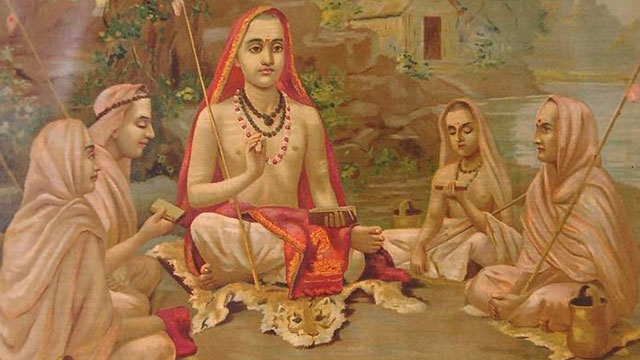
The Trap of Devotion to God and Guru We fear nothing more than being truly independent. True independence does not mean in the social context in regards to individual job titles, nor does it mean in the collective sphere of nationalistic independence, though both may be derivatives. Real independence is spiritual sovereignty, meaning the individual truly lives psychologically from the Heart with no agenda and is free from the attachment to social, cultural, and religious programs which imprison our mind. Some may argue that we all need a philosophical framework psychologically to navigate our way through this life to give us a sense of meaning. And others may say that we need to eliminate all philosophical frameworks from our mind, whether it is social, cultural, or religious, because then we can move freely in the world and have a mind that Zen Buddhism would say “is a mind of no deliberation,” meaning that it doesn’t stick to any type of formula to understand life. From the opposing perspective this still may be thought of as a type of framework as Canadian philosopher Charles Taylor points out in his work by explaining that formulating and taking on frameworks may be inescapable for the mind. But this could also be viewed as just being extremely clever in an attempt to be victorious in this ongoing game of spiritual and philosophical one-upmanship, while also not taking into account the actual experience of the individual which is hard for anyone to judge from an external point of reference. No matter how you view both perspectives on an individual level is not the point. The real emphasis is about how we depend on philosophical frameworks that we were once naturally drawn to but have over time become a crutch that obscures our ability to perceive reality without names, labels, or a prior agenda. This conditioned habit is carried over into the spiritual and religious philosophies we turn to when we yearn for liberation. Paradoxically the spiritual and religious philosophies we convert to originate from different environments than our own. Essentially they are built on an archetype diametrically opposed to the one embedded within our psychosomatic organism. This is evident more visibly when we find Western people interested in Eastern philosophy and other esoteric wisdom traditions. In our search for enlightenment, or real independence in other words, from social, cultural, and religious mental concepts we discover the eternal depth of the East and its ability to reveal our underlying true nature beyond the claustrophobic walls of our ego. Yet the dependence we seek to transcend is projected onto the spiritual temperaments of the East. For example, the Eastern character and temperament of devotion and surrender to God or guru/master becomes a crutch for both Eastern and Western seeker if their dependence on either eclipses their real faith and union with the irreducible essence of the universe. Again this is more visible when we observe a Westerner trying to embrace and mimic the Eastern archetypal structure. None more so than when we witness Western spiritually inclined people diving at the feet of a guru to kiss their feet or put their forehead on the guru’s feet in a so-called gesture of respect through the action of wiping the dust from the guru’s feet with the forehead. Deep down in the sacred intelligence of the gut, which is not connected to the ego, we know this is not genuine and is basically spiritual materialism because it is based on how we should appear to look towards others in the outside world and also to fulfill an image of ourselves that we have in our head. Though some may argue that this external behavior has an internal effect, and it does to some degree considering we have to completely humble our ego to kiss someone else’s feet who we acknowledge has more wisdom than us, but the problem is the attitude of devotion and surrender to either God or guru is based on the imitation of the archetypal temperaments of the East. (Note that in Oriental iconography a common image is the two footprints that symbolize divinity. They represent the feet of the divine that we kiss and touch with our hands as this action symbolizes that we are reaching in and kissing God in our heart). The Westerner will take on Eastern philosophical thinking and dress sense, for example, to hide and suppress the psychological habits and latent tendencies that cause us suffering. We imitate in the hope that these habits and tendencies will be transcended. The Easterner in turn does the same form of imitation when they try to take on the Western archetypal framework of social and materialistic success, but that topic is not of importance here. A sincere spiritually inclined individual has no need to imitate nor do they to the contrary have to uphold their social, cultural, and religious programming. We can appreciate that kissing the feet of a guru is primarily an Indian archetype and is a sacredly beautiful aspect of India when we observe the people of India in their childlike innocence practicing such devotion and humility to God and guru. But this is not practiced anywhere else in the Far East, whether that be China, Korea, Japan, or even South East Asia. And astonishingly the Far East and South East Asian spiritual and cultural traditions are heavily influenced by India where Hinduism gave birth to aspects of Buddhism and Buddhism traveled over the Himalayas to Tibet then China to mix with Taoism which eventually became Zen Buddhism in Japan. All along the way the environment especially in the Far East never deviated unnecessarily from their archetypal temperament to show honor and respect to a master and each other with a humble bow instead of the Indian version of kissing the guru’s feet. We would think it is extremely strange if a disciple of Japanese or
The Science and Practice of Humility OUT NOW!
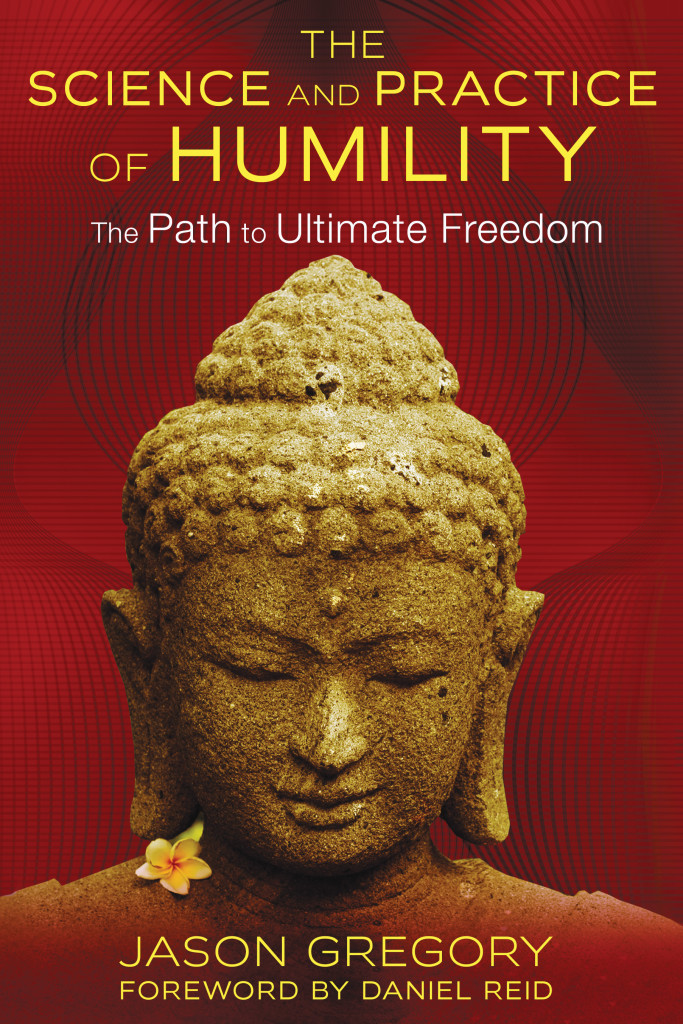
The Science and Practice of Humility is the new book written by Jason Gregory published by Inner Traditions in the US, who are one of the leading publishers on spiritual traditions east and west, perennial philosophy, holistic health and healing, etc. It was published on October 20, 2014 and has hit the bookstores worldwide. This is a monumental piece of work that has taken quite some time to finalize. The Science and Practice of Humility has been highly acclaimed by many authors, filmmakers, public speakers, and musicians with many well-known individuals endorsing the book. See the praise for The Science and Practice of Humility on this website here https://jasongregory.org/books-films/ On top of this, bestselling author Daniel Reid, who wrote the classic bestseller The Tao of Health, Sex, and Longevity, has wrote an unbelievable foreward for Jason’s new book which complements the profound content of the work. The Science and Practice of Humility is available to order now both in bookshops and online. To purchase the book below are the links to take advantage of the amazing offers online: Amazon US http://www.amazon.com/dp/1620553635/Kindle US http://www.amazon.com/dp/B00OBHCLLO/Amazon UK http://www.amazon.co.uk/dp/1620553635/Kindle UK http://www.amazon.co.uk/dp/B00OBHCLLO/Amazon Canada http://www.amazon.ca/dp/1620553635/Kindle Canada http://www.amazon.ca/dp/B00OBHCLLO/Amazon India http://www.amazon.in/dp/1620553635/Kindle India http://www.amazon.in/dp/B00OBHCLLO/Amazon France http://www.amazon.fr/dp/1620553635/Kindle France http://www.amazon.fr/dp/B00OBHCLLO/Amazon Germany http://www.amazon.de/dp/1620553635/Kindle Germany http://www.amazon.de/dp/B00OBHCLLO/Amazon Italy http://www.amazon.it/dp/1620553635/Kindle Italy http://www.amazon.it/dp/B00OBHCLLO/Amazon Japan http://www.amazon.co.jp/dp/1620553635/Kindle Japan http://www.amazon.co.jp/dp/B00OBHCLLO/Amazon Spain http://www.amazon.es/dp/1620553635/Kindle Spain http://www.amazon.es/dp/B00OBHCLLO/Kindle Mexico http://www.amazon.com.mx/dp/B00OBHCLLO/Kindle Brazil http://www.amazon.com.br/dp/B00OBHCLLO/Kindle Netherlands http://www.amazon.nl/dp/B00OBHCLLO/Kindle Australia http://www.amazon.com.au/dp/B00OBHCLLO/Inner Traditions/Bear & Co. http://www.innertraditions.com/isbn/978-1-62055-363-3Barnes and Noble http://www.barnesandnoble.com/w/the-science-and-practice-of-humility-jason-gregory/1118592174?ean=9781620553633Book Depository http://www.bookdepository.com/Science-Practice-Humility-Jason-Gregory/9781620553633Powell’s Books http://www.powells.com/biblio/9781620553633Fish Pond http://www.fishpond.com.au/Books/Science-and-Practice-of-Humility-Jason-Gregory/9781620553633Books a Million http://www.booksamillion.com/p/Science-Practice-Humility/Jason-Gregory/9781620553633 At the moment Jason is in the process of organizing three new books for publication, but if you have any questions feel free to ask him on the contact page as he would love to hear from you. More information on the content of Jason’s new book will be shared in his upcoming 2015 UK & US Tour. Jason sincerely hopes that you can secure yourself a copy of The Science and Practice of Humility and share what is within the book with others. The Science and Practice of Humility Book Trailers
